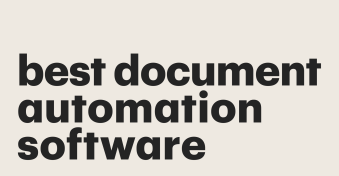If your company currently relies on its data team to disseminate accurate and tailored reports to the wider business, it would inarguably benefit from report automation.
In this article, we explain how it can be advantageous by breaking down the ins and outs of this technology so you can see its potential for yourself.
Key takeaways:
- Report automation enables you to automatically update and distribute reports so they always display accurate and up-to-date information.
- This helps your data team work more effectively and ensures your other departments are using reliable data to back their strategies.
- Since there are multiple types of tools designed to help with report automation, it’s possible to choose one that perfectly suits your company’s needs and requirements.
- Report automation is used across various industries for numerous purposes and brings an array of benefits to businesses like yours.
What is report automation?
Report automation works by enabling businesses to automatically create and update reports based on the most recent available data.
For companies that don’t use report automation, it’s necessary to have human employees manually generate a document every time this is requested.
Using automated reports takes this monotonous and time-consuming task out of their hands.
You can also program it so reports are sent to specific people or teams on a pre-defined schedule.
This makes it much easier to keep relevant individuals updated with useful information (without them having to ask for it).
The process of creating these reports involves automatically extracting new data, then processing this and using it to generate charts, graphs, and other visual materials.
This can save human employees a lot of time and effort.
What are the different types of automated reporting tools?
Not all report automation tools are the same. In fact, they tend to fall into one of four categories (as outlined below).

1. Code-heavy tools
This first type of automated reporting tool is based on giving your data team as much control as possible.
This means enabling them to fully adjust the tool using their coding skills.
A code-heavy automated reporting tool can only be adjusted, integrated, and operated by a team skilled at coding.
As long as this applies to your data team, they’ll be able to get the most out of these types of solutions.
ProWorkflow and Jira Software are popular options.
2. Code-light tools
There’s also report automation software created for those who don’t have as much experience working as code writers or editors.
These tools tend to either be low-code or no-code.
Of course, these tools are less customizable. However, they’re also easier to use and more beginner-friendly.
If this is what you’re after, Zoho Analytics or QuickBooks Online are good options, though PandaDoc wins out in our books.
3. BI tools
BI, or business intelligence, forms the basis of these types of tools.
They’re built with the goal of providing quick and easy access to crucial business data (hence the focus on intelligence).
This data can be used to generate insights to boost your business’s overall performance.
This may involve enhancing your internal processes and better supporting different departments and their unique needs.
These types of solutions are typically well-suited to companies that focus on BI over other metrics and priorities.
Power BI for Office 365 and Sisense are both examples of this type of tech.
4. KPI dashboards
The last kind of automated reporting system to pay attention to is a KPI (key performance indicator) dashboard.
If you recognize this acronym, it’s probably because you’re already using KPIs to gauge company performance and figure out how you’re stacking up — which means you’ll know how valuable it is to do this.
Accordingly, KPI dashboards are designed to help you stay on top of internal performance and gather relevant information for measuring KPIs.
They’re typically user-friendly (much like low-code and no-code solutions). However, this also means they’re less customizable.
Some examples of these tools include datapine and Mixpanel.
The many benefits of report automation
Now, let’s look at some of the advantages of using this tech in your business.
Streamlined workflows
Generating reports automatically is a type of workflow automation and contributes to completing your workflows as efficiently as possible.
This saves time and effort on the part of your employees.
A streamlined workflow is one that only includes the necessary steps.
If a machine can automatically generate reports for you, doing so manually becomes unnecessary, time-consuming, and a waste of resources.
High-quality work
Reports that are created automatically are going to be of a high standard.
This is because they’re based on the most recent data available and can be updated in real-time to account for sudden changes, ensuring they’re always current.
At the same time, they’ll be free from human error.
This makes for an excellent overall result in terms of the quality of the work.
Plus, anyone who uses these reports as the basis for their work is going to create similarly high-quality content based on the most recent data available.
Fast results
Another advantage for those who choose to automate reports is that they’re quite literally finished before you can snap your fingers.
That means no waiting around, no delays, and no projects put on hold.
This catalyzes a chain reaction that means other departments are able to work faster as well.
When reports are available quicker than you can request them, you never have to stop and wait for them (ergo, projects get completed in less time).
Better productivity
In the same way that dedicated customer service tools help you provide excellent experiences to more customers in less time, a good report automation solution enables your teams to get more done each day.
This means they’re more productive on the whole.
Automating repetitive processes also does wonders for morale.
Gone are the days when a data team would have to draw up five versions of the same report each week to keep up with new information; now, they can simply press a button and let those reports update automatically.
More sales in less time
One of the beautiful things about automation tools is that they’re often built to work in harmony with one another.
Having a solution that helps you automate one thing is great; having one that helps with multiple things is even better.
In this case, we’re talking about the potential for report automation tools to work together with their sales automation counterparts.
This type of automated teamwork leads to streamlined workflows (as above) and an overall easier time for your sales team.
That means more sales are made more efficiently and in less time.
More informed decision-making
Another benefit of report automation is its capacity to show completely up-to-date information in an easily digestible format.
This helps when it comes to making important business decisions in real time.
For example, you could use PandaDoc’s large database of templates, in combination with automation technology, to generate fully updated reports in a fraction of the time it would take to draw them up by hand.
These can then let you launch your strategy with confidence knowing your facts are fresh and reliable.
Readily accessible data
Perhaps one of the biggest advantages lies in the fact that report automation makes it easier for everyone in your company to access vital data.
They don’t even have to ask someone else to get it for them — it can all be handled by machines.
This leads to some very positive outcomes.
Firstly, when there’s plenty of data available within reach, teams have an easier time making sure the plans they create are based on facts.
This ensures their decisions have a higher chance of success.
Secondly, it helps departments gauge how successful their past or ongoing strategies have been.
For example, a marketing team could compare two recent campaigns to see which performed better and among which demographics.
What are the challenges of reporting automation?
While they’re fantastic at what they do, the solutions that make reporting automation possible aren’t without their challenges.
We’ve outlined three of these below and suggested how you can work around them.
Security
Reporting automation tools necessarily handle a lot of data.
This often includes sensitive and/or confidential information, which means it’s extra important to keep it safe.
The more people who have access to that data, the greater the chances that something might go wrong.
That’s why it’s vital to ensure you have robust security measures in place.
If you set hard limits on who can access what information and in which format, you greatly reduce the chances of a mishap.
A tool with strong built-in safety protocols is also incredibly helpful here, as it takes a lot of the legwork associated with cybersecurity out of your hands.
Universal adoption
As with any new solution, it may take some work to get everyone to use your reporting automation tool.
In the first few weeks after its installation, you’ll probably see at least a few employees continuing to send requests to the data team instead of using it.
This is simply down to force of habit.
To encourage universal adoption, it’s a good idea to prepare a standard response for the data team to give when they’re asked to do the work your new solution is intended to do.
This will save them time and gently remind your other teams that the tool was implemented for a reason.
Employee training
Since report automation is a newer technology, not everyone will know how to use it to its full potential straight away.
While that’s not a bad thing on its own, it does mean that implementing it comes with the caveat of having to teach people how it works.
This necessitates employee training sessions.
On the bright side, this means you can get everyone started on the right foot straight away.
When you explain how a tool works instead of hoping it will be intuitive enough on its own, you offer employees a chance to really make the most of it.
This also makes the learning curve less steep, even for those who aren’t super comfortable with modern tech solutions.
Which industries use report automation?
Next, we’ll give some examples of industries that use automated reporting. These include but are not limited to:
- App development. App development benefits from using report automation for quality control and user feedback, as well as for continuously improving existing products.
- Fashion. It’s vital to know which customer segmentation strategies are the most effective for helping a new trend take off.
- Restaurants. These rely on report automation to keep track of which ingredients need to be restocked, at what time, and in what quantities.
- Publishing. Requires constant up-to-date reports on which books are selling and which types of stories are popular with big groups of readers.
- Music. particularly streaming, where artist residuals are calculated using live data from streaming platforms.
- Media and entertainment. Relies on knowing what kinds of shows are sought after, something that report automation helps make clear.
- Travel. It’s crucial to stay on top of budgets to ensure customers are getting a good deal while companies continue to make a profit.
The value of learning how to automate reports and which tools to use
When you automate the reporting process, you help your teams to be their most productive while also ensuring your company creates data-backed strategies and plans.
As mentioned above, there are many different tools, each with its pros and cons.
As for how to choose the best one, we recommend tailoring this to your needs and ensuring you’re picking a solution that fits the skills and expertise of your data team.
To this end, it can be helpful to try some free tools (or free trials) before investing to determine exactly what you’re looking for.
Disclaimer
PandaDoc is not a law firm, or a substitute for an attorney or law firm. This page is not intended to and does not provide legal advice. Should you have legal questions on the validity of e-signatures or digital signatures and the enforceability thereof, please consult with an attorney or law firm. Use of PandaDocs services are governed by our Terms of Use and Privacy Policy.


